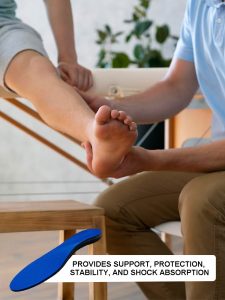
Wearing insoles, also known as shoe inserts, can provide additional support, cushioning, and comfort for your feet. However, if you choose not to wear insoles, several things may occur:
1. Reduced Cushioning
Insoles are designed to absorb impact and provide cushioning between your feet and the ground. Without them, you may experience less shock absorption, leading to increased pressure on your feet, joints, and lower limbs.
2. Lack of Arch Support
Many insoles offer arch support, which helps maintain proper alignment and reduces strain on the arches of your feet. Without this support, individuals with flat feet or high arches may experience discomfort or overpronation (excessive inward rolling) or supination (outward rolling).
3. Increased Discomfort
Insoles can help alleviate foot pain by redistributing pressure, providing stability, and enhancing overall comfort. Without them, you may experience more foot fatigue, discomfort, and potential issues like plantar fasciitis, heel pain, or metatarsalgia (pain in the ball of the foot).
4. Impact on Gait and Posture
Insoles can influence your gait (walking pattern) and posture by promoting proper alignment and distributing weight evenly. Without insoles, there might be deviations in your gait, potentially leading to issues in the knees, hips, and back.
5. Limited Foot Conditions Management
Insoles can serve specific purposes, such as addressing conditions like flat feet, high arches, or overpronation. If you have any of these conditions, not wearing appropriate insoles might exacerbate symptoms or lead to further complications.
It’s important to note that everyone’s feet are different, and the need for insoles depends on individual factors such as foot structure, existing conditions, and activities. If you’re experiencing foot discomfort or have specific foot conditions, it’s advisable to consult a podiatrist or healthcare professional for personalized advice.
